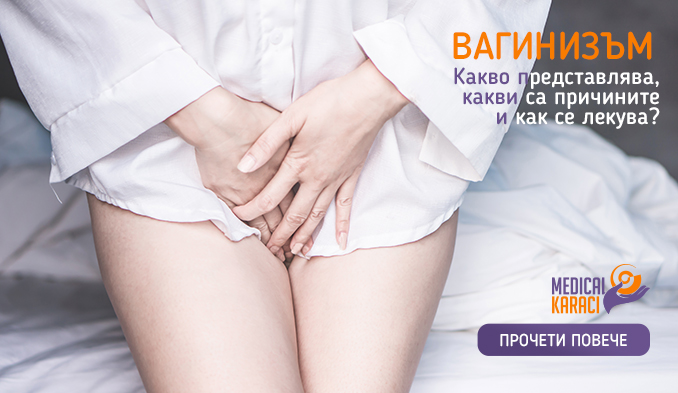About 3-4% of women report mild sensations typical of vaginismus, but many more are those who experience severe discomfort and are ashamed to seek help.
We, ZIC Medical Karadži, in our desire to be as helpful as possible with the information we bring to your knowledge, will take the liberty today of touching on a disease that society does not often allow itself to talk about. A disease that has both physical and mental manifestations. A condition affecting more and more girls and women in puberty, namely the disease VAGINISM. Speaking openly about this silenced and neglected problem, we emphasize its importance and our willingness to assist each of you who will find a mirror of your condition in this text. We have a team of experienced professionals who have a high success rate in dealing with the problem.
What is vaginismus?
Vaginismus is an involuntary, highly spastic contraction of the muscles of the vagina and pelvic floor. In milder forms of vaginismus, there may be only a slight sensation of pain during intercourse or difficulty at the onset of intercourse. These conditions may subside and worsen, or remain chronic.
Severe manifestations of vaginismus are associated with the inability to have sexual intercourse or it is very painful.
Vaginismus can be primary and secondary:
- Primary vaginismus usually develops after the first sexual contacts and continues with pain sensations:
- during sexual intercourse
- when inserting a tampon
- gynecological examination, etc.
The condition is tolerable, but it is possible to worsen it when superimposed on the psychological cause - fear of pain. - In secondary vaginismus, the woman has led a normal sex life, but suddenly severe pain appears. This can happen at any stage of a woman's life, but most often it happens when:
- birth
- menopause
- operations
- prolonged severe sexual infections
- or traumatic event
Sometimes the condition can worsen to the point that a single touch can cause involuntary spasm of the vaginal muscles.
What are the reasons?
- Physical causes - manifestations may be due to vaginal dryness, infections, gynecological diseases or surgeries. These moments, however, are surmountable, and after cure of the cause, relief of the condition occurs.
- Psychological reasons - Increasingly, psychological and emotional conditions that a woman's psyche is going through are emerging as the main cause of vaginismus. Causes can be:
- experienced stress in the past or present
- painful or forced sexual intercourse
- traumas that have led to the erosion of a woman's self-esteem
In these cases, a faulty connection is created between the brain and the musculature of the genital organs, sending the wrong commands to contract the muscles. For example, after rape, vaginismus appears as a conditioned protective reflex, and even in well-intentioned relationships the musculature becomes spastic. A vicious circle closes as the pain induced by the spasm is projected onto anything that might be painful - an examination, the insertion of a tampon, sexual intercourse. Despite the vaginismus, the woman's libido may not be impaired. In the beginning, the patient may try to overcome the vicious thought by confronting the fear of pain until she experiences it. This reinforces the fear and makes it compulsive.
Every woman is familiar with how such a problem affects her self-esteem, but despite this, seeking professional medical help is postponed for a long time.
Vaginismus is treatable and with good success - especially with the active cooperation of the patient and her partner.
Many couples start seeking help only when it comes to so-called "virgin marriage", which lasts for years and can deprive the couple of conception.
What are the treatment options?
According to the cause of vaginismus, treatment involves the involvement of several specialists - a gynecologist, a psychotherapist and a sexologist.
The main unit of the healing process is psychotherapy and autogenic training aimed at reducing the fear of pain and, consequently, reducing the tone of the vaginal musculature.
Physiotherapy treatments are another technique to combat vaginismus by reflexively acting on muscle tone and improving blood circulation in the pelvis.
After controlling the strongest spasm, doctors may recommend treatment by vaginal dilators - at first under medical supervision, and after training and at home. Sets of dilators are available in different diameters and lengths. Start by inserting into the vagina the one with the smallest size and leave it that way for a certain amount of time. Then it is on to the next diameter. The aim is gradual stretching of the vaginal musculature until the muscles acquire normal tone and elasticity and become accustomed to them.
There is another methodology for the treatment of vaginismus.
Botox injection intravaginally. This treatment is usually used in combination with progressive dilation. Botox injection is done under general anesthesia as this best identifies residual spastic muscles. After the Botox is inserted, the dilator of the largest size is placed directly into the vagina. A long-acting anesthetic is placed to avoid discomfort after coming out of anesthesia. The patient's task is to agitate the dilator for several days. The couple is then given advice on how to proceed to normal intercourse.
It is good for every woman with this problem to master techniques of relaxation of the pelvic muscles, as well as to take care of irrational thoughts and fears regarding the hip.
It is most important, however, that women with vaginismus should not be ashamed to discuss it with a professional and know that timely treatment is a requirement for a peaceful and pain-free life.
Call us on the following numbers "Medical Karaj": 0879 977 401 or 0879 977 402.
Also keep an eye on our constantly updated Facebook content.



